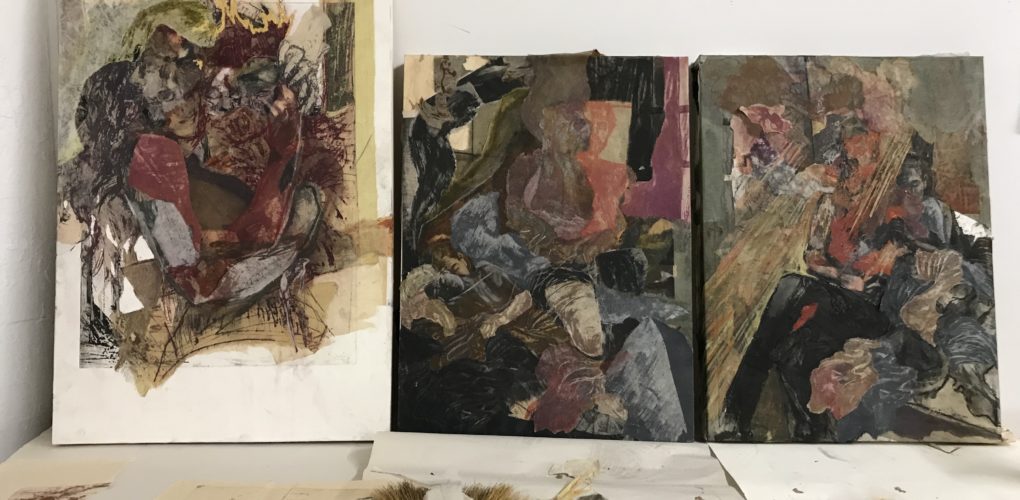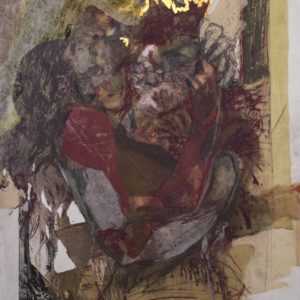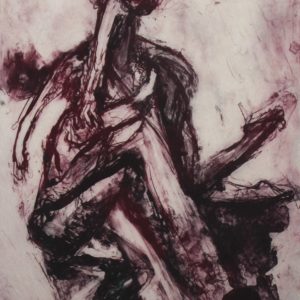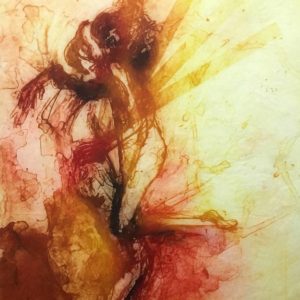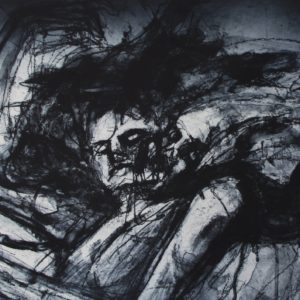The Others
 Meet the Others: A.J. Springer
Meet the Others: A.J. Springer
The Game Changers. The Rule Breakers. The Innovators. Discover some of the fantastic emerging talent showcasing their work at The Other Art Fair.
A.J. Springer is a multi-media artist who uses a combination of printmaking, drawing, collage, painting, sculpture and woodworking to create immersive installations and 2D pieces.
Tell us about who you are and what you do. What is your background?
As a native New Yorker, I have been pursuing art and creative practices since a young age, utilizing the resources of my environment by becoming engaged in different artist communities. While pursuing my own practice, I have worked in a number of different technical positions in the art world, providing me with the opportunity to explore new methodologies and materials. Working as a decorative painter/gilder, sculpture restorer, artist assistant, carpenter, finishing and framing I’ve been able to introduce these methods into my art-making process, leading to a complex combination of different techniques, approaches and disciplines.
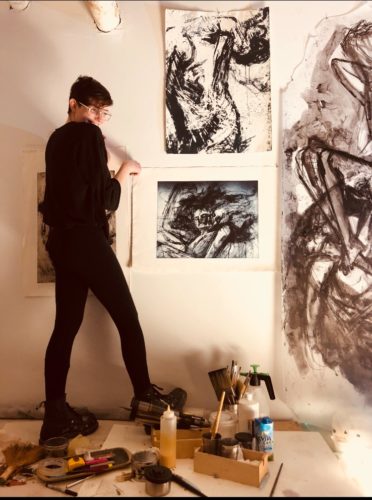
What are the major themes you pursue in your work?
My work seeks to instill and dissect the connotations and emotions people associate with the human form. I focus on innate concepts and curiosities such as duality in nature, sexuality, violence, and primordial reactions through a fragmentation of the figure. I’m interested in pushing the viewer into an awareness of the body and our ever-changing relationship with it by challenging them to process and internalize these ideas, confronting the complexities of their own human condition.
Pulling from psychology, I am attempting to create an experience akin to a Rorschach inkblot test. The viewer is pushed into a reflective dialogue that forces self-awareness, a take on the Jungian confrontation with their “shadow”. The interaction between the figures serves as a symbol for the struggle we all experience not just with others but also within ourselves.
How did you first get interested in your medium and what draws you to it specifically?
The current process has been formed by a culmination of many various methods of art-making that I have used for many years but typically separately. Having a desire to work in multiple mediums and formats has led me to create an intricate mixed-media process that combines drawing, painting and printmaking. By using the process of solar printmaking I can make a plate of a stage in a drawing, and then keep working on the drawings, changing the image and animating it forward until I feel it’s ready to be proofed in the next stage of its evolution. By creating many prints of the same image, it allows me to freely experiment and sometimes, destroy, whatever piece I’m working on. Having the liberty of making mistakes and still having additional material has allowed me to expand my courage in image-making, negating the preciousness that can sometimes diminish a piece.
How has your style and practice changed over the years?
Over the years my work has become much more interconnected with my emotional experiences and struggles with mental health. I was making art for a long time as a younger person that was devoid of more personal meaning, a lot of technical studies and lessons that helped develop a skill set, but were lacking a deeper concept. After struggling through a diagnosis of Bipolar disorder, I began doing a portrait series of those also diagnosed with mental illness.
Through my interactions and conversations in these sessions, I found that the experiences shared in the community of mental health were struggles everyone could relate to, whether they realize it or not. After acknowledging this idea, my work and practice became much more conceptually focused on uniting people through these shared emotions, reflecting the viewers’ own feelings into my work.
Can you walk us through your process? How long do you spend on one work? How do you know when it’s finished?
My work typically starts off as a drawing. The figure and portraits are my subject of choice, and I use a combination of working with live models in the studio with source materials such as classical paintings, photographic images found in history, and other miscellaneous sources.
The drawings are first done on mylar with a wax pencil and ink. Then, using a light sensitive process of solar printmaking, I expose the plate directly from the drawing. Once the solar plates are made, they are then printed in various versions using “à la poupée” inking technique onto colored pieces of mulberry paper.
My process allows for me to take pieces and compose them together. By utilizing the transparent qualities of the paper with the contrast of authentic gold leaf, I build layers that connect and form a self-starting narrative. As I typically work on many pieces at the same time, they usually take a very long time to arrive at the finished version, and elements of each one often interlace. Because these collages so drastically evolve overtime, figuring out when they are finished has become a delicate task. Because there is not a preconceived image of the final stage, I have to pay close attention to technical and compositional shifts in the piece to understand what works harmoniously and what does not. It’s a lot of trial and error. Essentially, I decide a piece is finished by virtue of a visual dialogue between the work and myself.
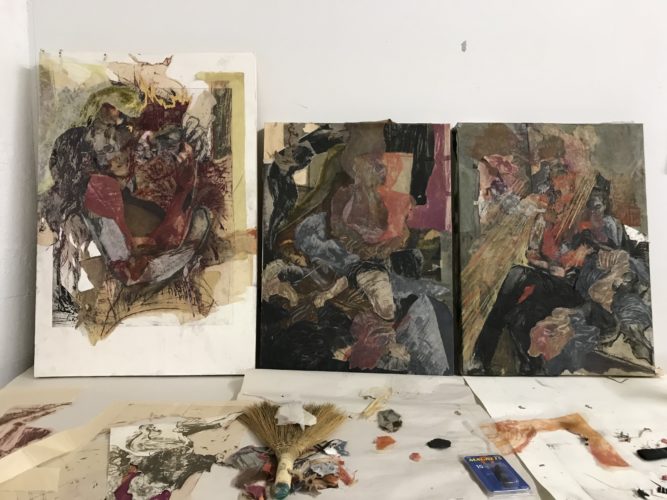
What series or project are you working on next?
I would like to push my next body of work into a more sculptural direction, utilizing pieces of wood, shaped and sanded into organic forms, creating armatures for these shifting figurative pieces. The portraits will be set inside of a deep shadow box-like frame, with the armature pushing in from the backing of the frame. The armature, breaking through the surface of the images, playing with distortion between parts of the image being both 2 and 3 dimensional. The armature will also be emerging from and interlaced within the frame itself.
Images and prints from the portrait series I’ve been developing for this project will then be collaged using paper-mache on top of the wooden armature, with parts of the portraits layered on top of one another allowing the transparencies to be viewed. Some light wax will also be incorporated into parts of the piece, to both further the transparent qualities of the rice paper and to create a more organic skin like texture for the piece.
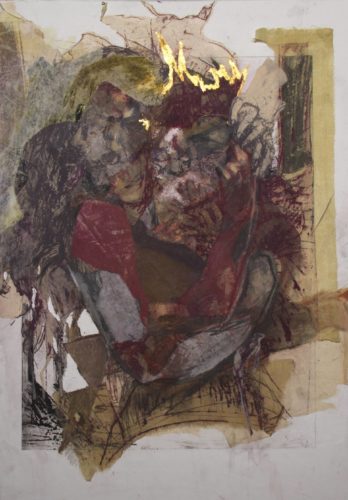
What is the best advice given to you as an artist?
“Inspiration exists, but it has to find you working.” -Picasso
